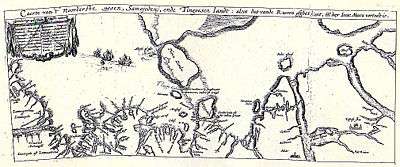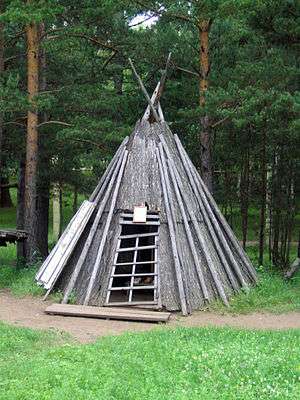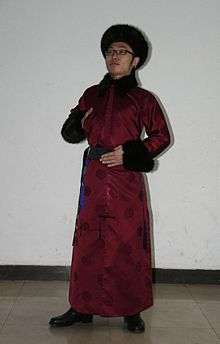Tungusic peoples

Tungusic peoples are the peoples who speak Tungusic languages. They inhabit Eastern Siberia and are recognized as distinct from Mongols and Turkic peoples. During the 17th century, the Tsardom of Russia was expanding east across Siberia, and into Tungusic-speaking lands, ending with the 1689 Treaty of Nerchinsk. The first published description of a Tungusic people to reach beyond Russia into the rest of Europe was by the Dutch traveler Isaac Massa in 1612, who passed along information from Russian reports after his stay in Moscow.[1]
Etymology
The word Tungus derives from "Donki", which means "men" in Tungusic languages.[2] It has also been suggested that the word derives from "tungus", which means pig.[2] Some scholars think it was derived from the Chinese word Donghu (東胡, "Eastern Barbarians", cf. Tonggu 通古 = Tungusic).[3] This "chance similarity in modern pronunciation led to the once widely held assumption that the Eastern Hu were Tungusic in language. However, there is little basis for this theory."[4]
Location

The word originated in Tunguska, a region of eastern Siberia bounded on the west by the Tunguska rivers [2] and on the east by the Pacific Ocean.
The largest group of Tungusic peoples are the Manchu people, who number around 10 million. They are originally from Manchuria, which is now Northeast China, but following their conquest of China in the 17th century, they have been almost totally assimilated into the main Han Chinese population of China. This process accelerated especially during the 20th century. The Xibe people are a Manchu subgroup.
Evenks live in the Evenk Autonomous Okrug of Russia. The Udege (Удэгейцы in Russian; ethnonym: удээ and удэхе, or udee and udehe correspondingly) are a people who live in the Primorsky Krai and Khabarovsk Krai regions, also in Russia.
2–3% of them are of Mitochondrial DNA haplogroup Y origin.
Peoples
.png)
Tungusic peoples are:
- Evenks
- Evens
- Manchu people (known earlier as the Jurchen people)
- Negidals
- Nanai people
- Oroch people
- Orok people
- Oroqen people
- Udege people
- Ulch people
- Sibe people
Gallery of Tungusic people and history
-

The Manchu people in Fuzhou in 1915
-

A Manchu guard
-

An Evenks wooden home
-

Sibo military colonists (1885)
-

An Udege family
-

Tungus man in Vorogovo, Siberia (1914)
-

A Manchu young man in traditional clothing
References
- Mile Nedeljković, Leksikon naroda sveta, Beograd, 2001.